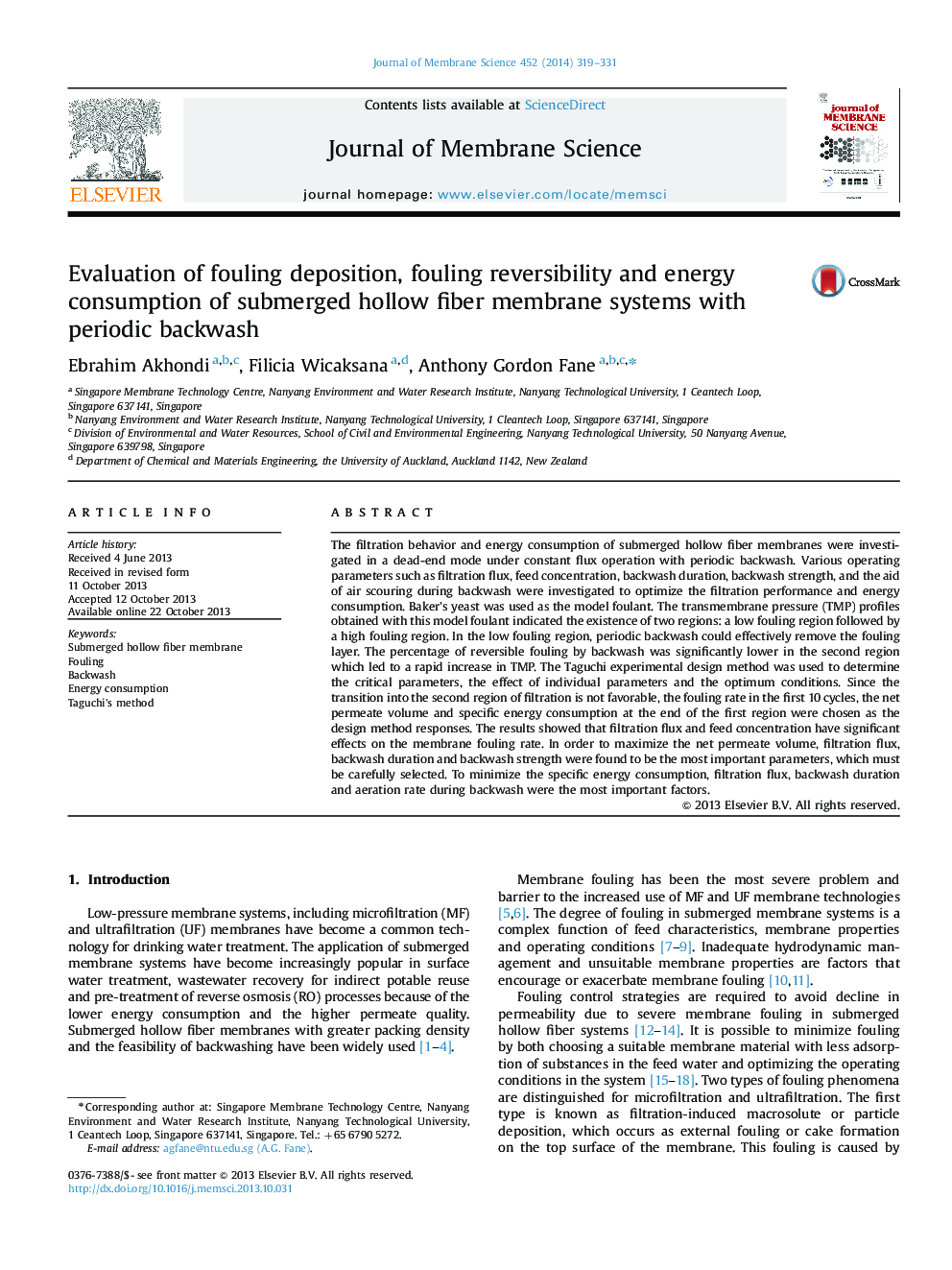| کد مقاله | کد نشریه | سال انتشار | مقاله انگلیسی | نسخه تمام متن |
|---|---|---|---|---|
| 633720 | 1456047 | 2014 | 13 صفحه PDF | دانلود رایگان |
• Filtration behavior and energy consumption of submerged membranes were investigated.
• The Taguchi experimental design method was used to determine the critical parameters.
• A low fouling region followed by a high fouling region occur in the TMP profile.
• Filtration flux and feed concentration have significant effects on membrane fouling rate.
• To minimize energy consumption, flux, backwash duration and aeration rate are important factors.
The filtration behavior and energy consumption of submerged hollow fiber membranes were investigated in a dead-end mode under constant flux operation with periodic backwash. Various operating parameters such as filtration flux, feed concentration, backwash duration, backwash strength, and the aid of air scouring during backwash were investigated to optimize the filtration performance and energy consumption. Baker's yeast was used as the model foulant. The transmembrane pressure (TMP) profiles obtained with this model foulant indicated the existence of two regions: a low fouling region followed by a high fouling region. In the low fouling region, periodic backwash could effectively remove the fouling layer. The percentage of reversible fouling by backwash was significantly lower in the second region which led to a rapid increase in TMP. The Taguchi experimental design method was used to determine the critical parameters, the effect of individual parameters and the optimum conditions. Since the transition into the second region of filtration is not favorable, the fouling rate in the first 10 cycles, the net permeate volume and specific energy consumption at the end of the first region were chosen as the design method responses. The results showed that filtration flux and feed concentration have significant effects on the membrane fouling rate. In order to maximize the net permeate volume, filtration flux, backwash duration and backwash strength were found to be the most important parameters, which must be carefully selected. To minimize the specific energy consumption, filtration flux, backwash duration and aeration rate during backwash were the most important factors.
Journal: Journal of Membrane Science - Volume 452, 15 February 2014, Pages 319–331
